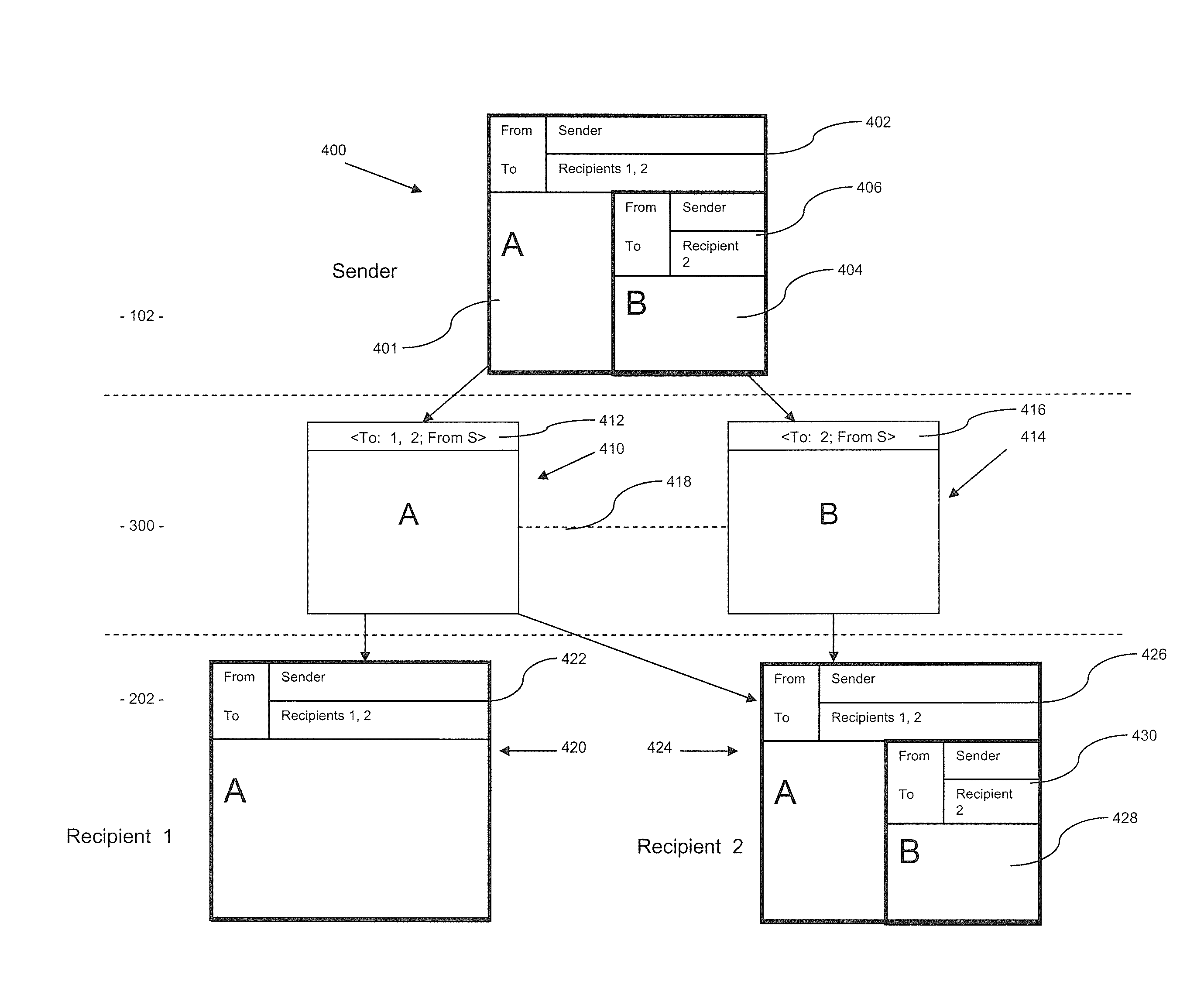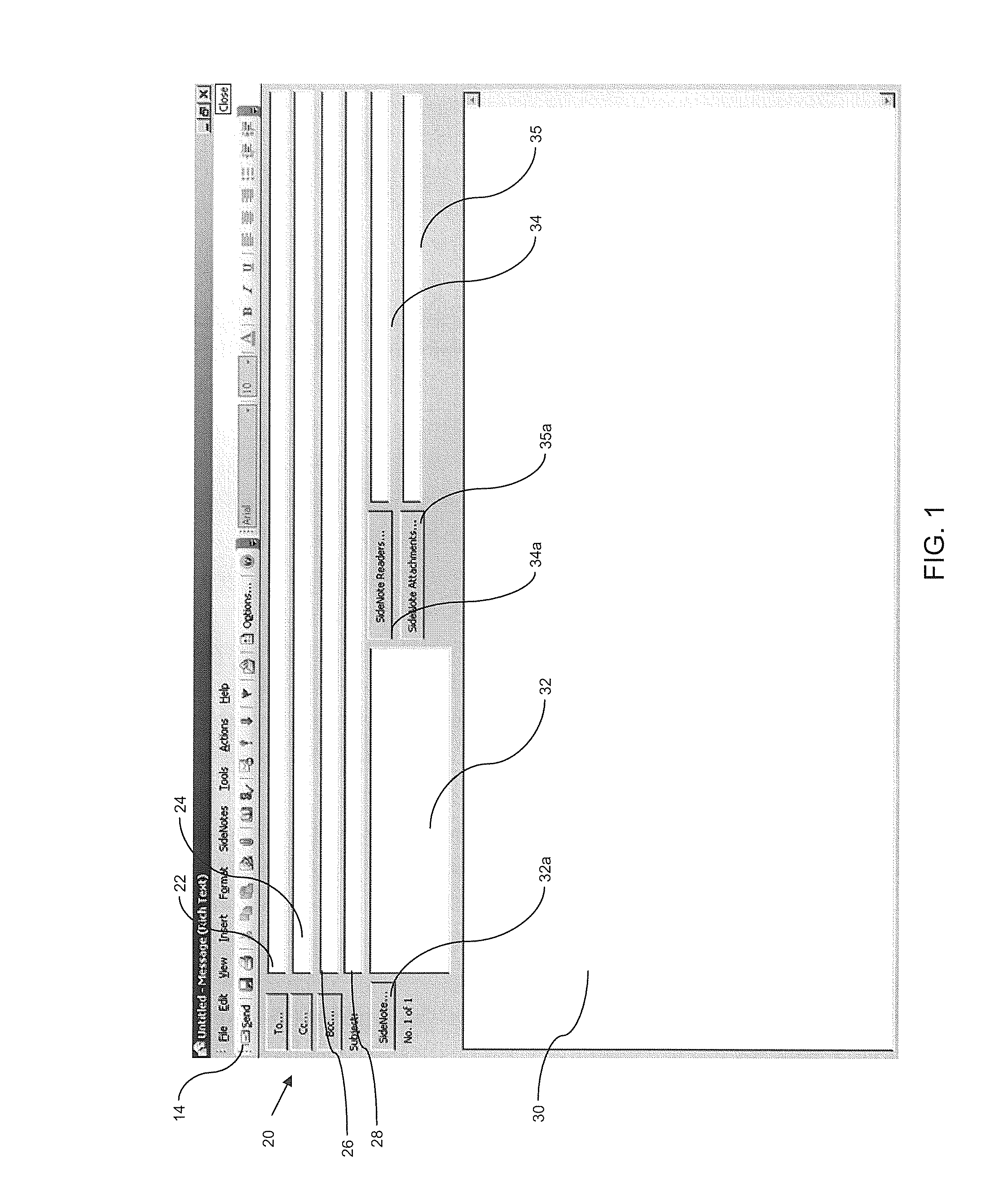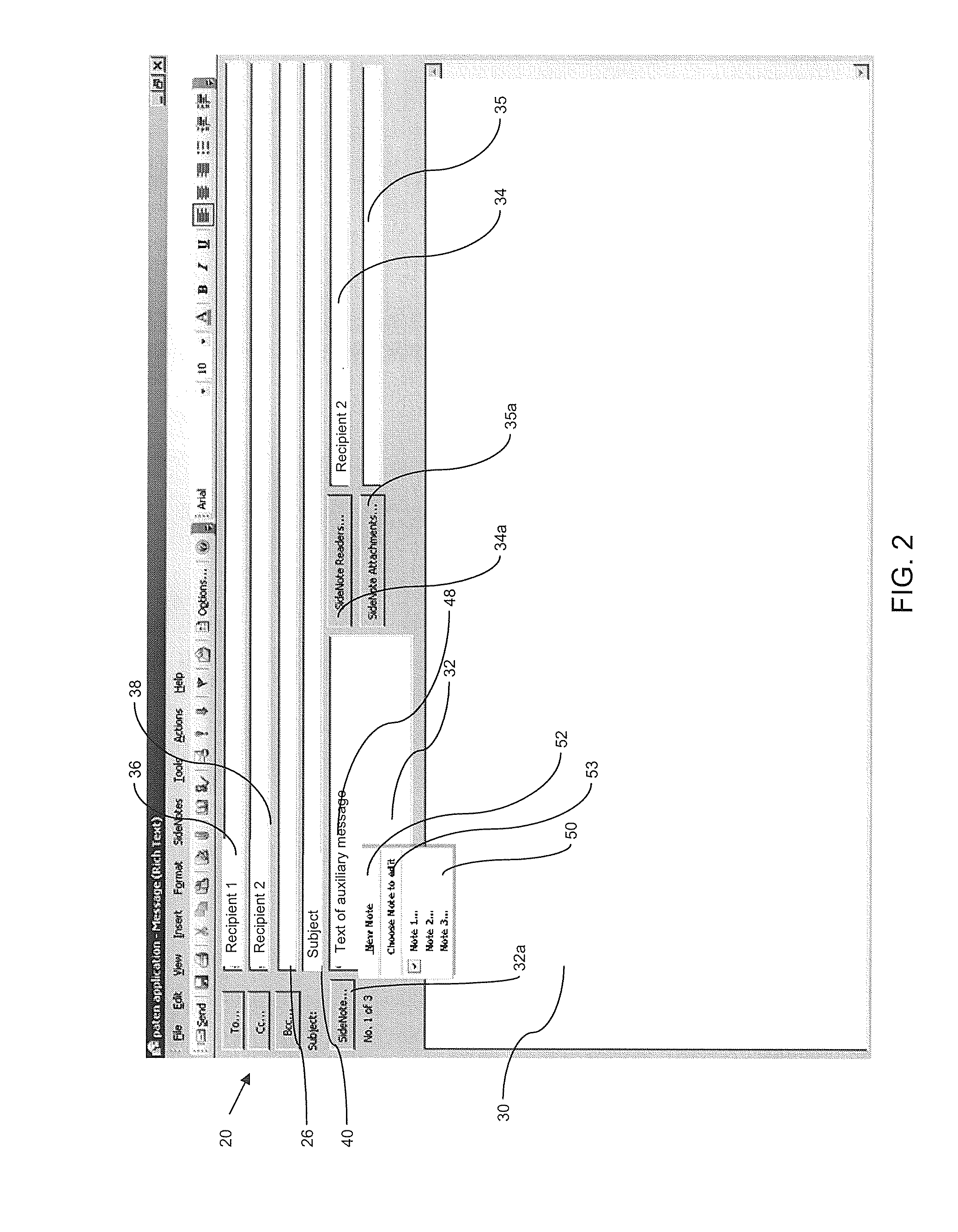Method and system for processing messages
a message and electronic technology, applied in the field of electronic message processing methods and systems, can solve the problems of /b>1000/b> of the original e-mail b>1000/b> being compromised, increasing complexity,
- Summary
- Abstract
- Description
- Claims
- Application Information
AI Technical Summary
Benefits of technology
Problems solved by technology
Method used
Image
Examples
first embodiment
[0122]A detailed discussion of a system and its operation according to the present invention will now be described.
[0123]FIG. 6 is a schematic diagram showing a system 100 for implementing embodiments of the present invention. The system 100 comprises a first apparatus 102, and a second apparatus 202. The first apparatus comprises a display device 104, a data entry device 106, an input / output unit 108, a processing system 110 and a storage system 112. The first apparatus 102 may be configured as a client terminal, or sever, for example. Similarly, the second apparatus 202 comprises a display device 204, a data entry device 206, an input / output unit 208, a processing system 210 and a storage system 212. The second apparatus 202 may also be configured as a client terminal, or server, for example. The first and second apparatus 102, 202 can communicate over a network 300, such as the Internet, as shown schematically in FIG. 6. Further, the first and second apparatus 102, 202 may be con...
second embodiment
[0140]the present invention will now be described with reference to FIG. 10. FIG. 10 is a schematic diagram showing a message 700 to be sent from a sender to a first recipient. A multi-part message 700 having a content X (in which X comprises content Y and Z) is created by a sender inputting data onto the first apparatus 102, for example, via the data entry device 106. The multi-part message has a recipient field 702, containing an identifier of a first recipient. When the sender wishes to send the message 700, the message is split up into a primary 704 message having a header 706, and a secondary message 708 having a header. The headers 706, 710 of the primary 704 and secondary 708 messages correspond to the recipient field 702 of the multi-part message 700, i.e. indicative of the fact that the message is destined for the first recipient.
[0141]The primary message 704 has the content Y, and the secondary message 708 has the content Z. The respective contents Y and Z may each represe...
PUM
 Login to View More
Login to View More Abstract
Description
Claims
Application Information
 Login to View More
Login to View More - R&D
- Intellectual Property
- Life Sciences
- Materials
- Tech Scout
- Unparalleled Data Quality
- Higher Quality Content
- 60% Fewer Hallucinations
Browse by: Latest US Patents, China's latest patents, Technical Efficacy Thesaurus, Application Domain, Technology Topic, Popular Technical Reports.
© 2025 PatSnap. All rights reserved.Legal|Privacy policy|Modern Slavery Act Transparency Statement|Sitemap|About US| Contact US: help@patsnap.com



